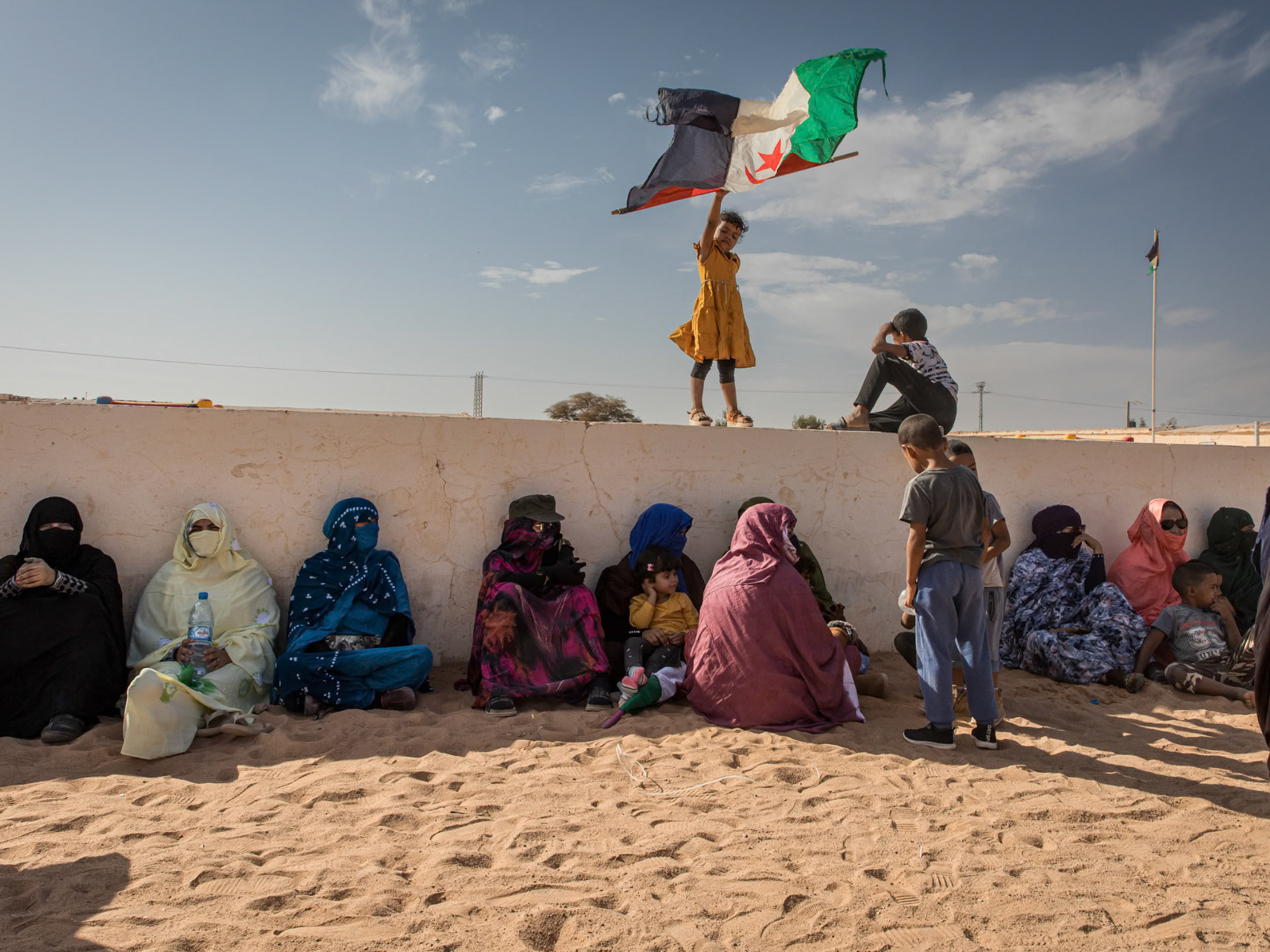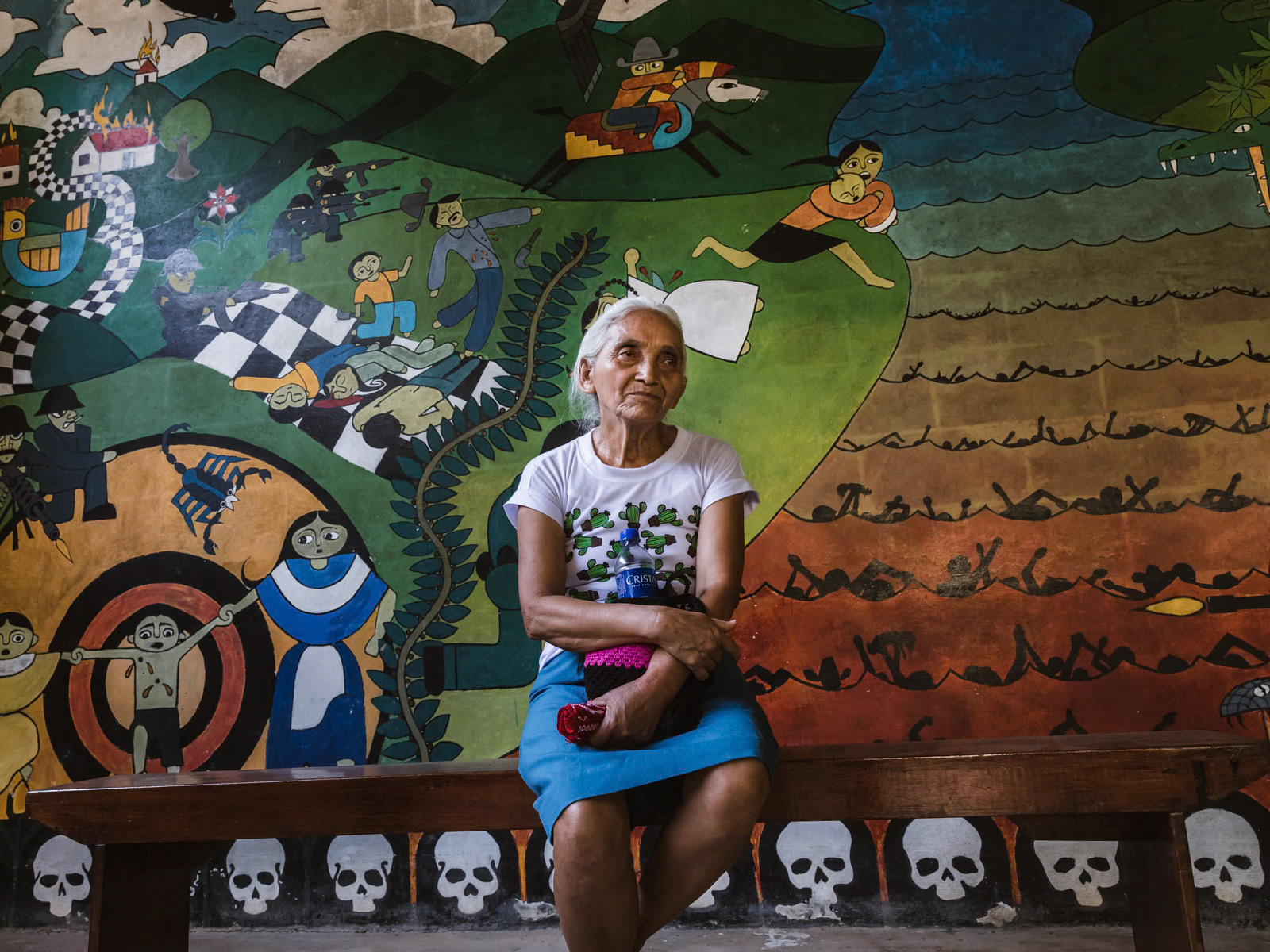The territory of Nagorno-Karabakh and its population have existed in a state of limbo and status quo since the first war over Karabakh in the early 1990s. Following the 1994 ceasefire between Armenia and Azerbaijan, the region has remained a frozen conflict, with Armenia and the self-proclaimed Republic of Artsakh holding on to control over Nagorno-Karabakh and the surrounding territories that were occupied during the war. Despite the passing of nearly three decades, there has been no meaningful compromise from either side regarding the control of these areas. The unresolved issue has deepened divisions in the South Caucasus, isolating Armenians, and has been further exploited by Russia, which has maintained influence over the region by leveraging the tensions.
Russia’s involvement in the region dates back to Soviet-era policies, where Stalin's policies of ethnic engineering and territorial rearrangements set the groundwork for long-standing tensions. Over the decades, Russia has armed both Armenia and Azerbaijan, fostering a delicate balancing act. While Armenia is a formal military ally of Russia, this alliance does not extend to Nagorno-Karabakh, which has always been internationally recognized as part of Azerbaijan.
On September 27, 2020, a major armed conflict erupted between Azerbaijan, supported by Turkey, and the self-declared Republic of Artsakh, along with Armenia, in the disputed region of Nagorno-Karabakh and its surrounding territories. This marked the first large-scale conflict since the 1994 ceasefire, aside from the brief 2016 flare-up known as the April War. Nagorno-Karabakh and its surrounding areas are internationally recognized as Azerbaijani territory, constituting nearly 20% of Azerbaijan's landmass. Since the ceasefire, the area has been under the control of Artsakh, a breakaway state with a largely Armenian population.
The 44-day war that followed was characterized by intense Azerbaijani offensives, which gradually evolved into a full-scale military operation. The conflict was marked by the widespread use of attack drones, which decimated Armenian defense lines before the major ground assaults even began. As of now, more than 8,000 casualties are reported, with over 5,000 on the Armenian side. The true toll is likely higher, as many are still missing or unaccounted for. Tens of thousands of civilians were displaced within Nagorno-Karabakh and the adjacent Azerbaijani towns close to the frontlines. The use of long-range artillery, missile strikes, and cluster munitions on civilian areas has left another generation of displaced people in its wake, adding to the over one million displaced individuals from the first Karabakh war.
Following Azerbaijan's capture of key areas, including the southern parts of Nagorno-Karabakh and the town of Shushi, a ceasefire agreement was signed on November 9, 2020, between Azerbaijan, Armenia, and Russia. The ceasefire, mediated and sponsored by Russia, stipulated that each side would retain control of their respective areas, while Armenia was required to return all surrounding territories it had occupied since 1994. The agreement also involved the deployment of approximately 2,000 Russian peacekeeping troops, tasked with monitoring the Lachin corridor that links Nagorno-Karabakh to Armenia. This ceasefire effectively prevented Azerbaijani forces from taking full control of Nagorno-Karabakh, including its capital, Stepanakert, which was on the brink of falling when the ceasefire was reached.
Since the ceasefire, Armenians have slowly started returning to areas of Nagorno-Karabakh still under Armenian control, but they face new political, military, and geographical realities they were not prepared for. While the ceasefire has held thus far, the prospects for a comprehensive and inclusive peace agreement remain distant. The region is still very much entrenched in its divisions, and the fear is that the conflict could easily slide back into the same status quo of the past 27 years.
As of now, Nagorno-Karabakh has been fully reintegrated into Azerbaijan, with the 100,000-strong Armenian population having fled the territory, becoming refugees in Armenia. While the presence of peacekeeping forces guarantees a temporary status quo, it does not promise lasting peace. For any real progress to be made, it will require significant political and emotional courage from both sides to overcome divisions and find common ground for peace. Until then, the fragile peace holds, but reconciliation remains a distant hope.

The territory of Nagorno-Karabakh and its population have been in limbo and status quo since the first war over Karabakh in the beginning of the nineties. Armenia and the self proclaimed Republic of Artsakh have for the past 27 years and the 1994 ceasefire maintained a status qu and have never really been ready to compromise with Azerbaijan on control of Nagorno-Karabakh or even the Azerbaijani surrounding territories that were occupied during the past 3 decades. The Nagorno-Karabakh frozen conflict has created divisions in the south Caucasus and isolation for Armenians. This leverage has been used by Russia in a divide and rule approach to the region ever since Stalin started ethnic, land and population engineering ninety years ago. During the past decades, Russia has been consistently arming both Azerbaijan and Armenia. While Armenia is part of a formal military alliance with Russia, this does not extend to Nagorno-Karabakh who has always been recognised as part of Azerbaijan internationally. On 27 Septamber 2020 a armed conflict between Azerbaijan, supported by Turkey, and the self-proclaimed Republic of Artsakh together with Armenia erupted in the disputed region of Nagorno-Karabakh and surrounding territories. It was the first major armed conflict, except for the 4-day April 2016 war, since the 1994 ceasefire following the first Karabakh war. The region of Nagorno-Karabakh and surrounding territories are internationally recognised as part of Azerbaijan and represent nearly 20% of its territory. Since 1994 it has however been under control and governed by Artsakh, a breakaway state with a homogeneous Armenian population. The 44-day war started with initial Azerbaijani offensives along the line of contact and gradually evolving in a massive offensive in the southern flatter parts of the region. The war was marked by overwhelming use of attack drones that took out Armenian defense lines and made a massive number of casualties before the main offensive even started. Current estimates put the current number of casualties at more than 8,000 on both sides, more than 5,000 on the Armenian side alone. The number of casualties is probably higher as many are still missing and unaccounted for. Ten thousands of civilians have been displaced within Nagorno-Karabakh and in towns close to the frontline in Azerbaijan. Widespread use of long-range artillery, missile strikes and cluster munitions on cities and civilian areas within Nagorno-Karabakh and in Azerbaijan by both sides has created another generation of displaced people in addition to the one million displaced Armenians and Azerbaijani of the first Karabakh war between 1991 and 1994. Following the capture of the southern parts of Nagorno-Karabakh by the Azerbaijani forces and Shushi, the second town in Karabakh, a ceasefire agreement was signed on 9 November 2020 between Azerbaijan, Russia and Armenia. The ceasefire agreement was mediated and sponsered by Russia and stipulates that the sides will keep control of the currently held areas within Nagorno-Karabakh, while Armenia has to return to Azerbaijan all surrounding areas it occupied since 1994. Around 2000 Russian soldiers are deployed as peacekeeping forces, for at least 5 years, along the Lachin corridor linking Nagorno-Karabakh to Armenia and within the Armenian controlled part of Nagorno-Karabakh. Without this ceasefire agreement the whole territory of Nagorno-Karabakh would probably have been overran by the Azerbaijani army, or at least its capital Stepanakert which was within 5 km after the capture of Shushi and emptied of its population by the 9th of November. Since the ceasefire and the deployment of Russian troops, Armenians have slowly started to return to the areas of Nagorno-Karabakh still under control of the Armenian authorities, faced with new geographical, military and political realities they were not prepared for. For the moment the ceasefire holds, but a comprehensive inclusive peace agreement is still very far away and the risk to enter into the same status quo as for the past 27 years is very real. It will require a lot of political and emotional courage to go beyond divisions and reconcile around things that could be of common interest. In meanwhile the presence of peacekeeping troops will guarantee a status quo but not peace. Armenian soldier holding the Artsakh flag. Artsakh is for Armenians the territory of Nagorno-Karabakh and surrounding captured lands during the first war between 1991 and 1994. The self proclaimed Republic of Artsakh was never recognised internationally. Southern frontline road between Karmir Shuka and Chartar, Nagorno-Karabakh, December 2020

A shelled appartment block near a power station line. Starting on the 27th of September 2020, the Azerbaijani artillery and drones kept Stepanakert, the capital of Nagorno-Karabakh, a town with a population of 50,000, under fire for 44 days. Human Rights reports highlighted the use by both sides of banned munitions such as cluster munitions and artillery rockets that did not distinguish between military targets and civilian structures. Armenian forces have also hit several times densely populated areas with rockets within Azerbaijan, in particular the second largest city of the country, Ganja. Stepanakert, Nagorno-Karabakh, December 2020

Before the war Kamir Shuka town was located in the center of Nagorno-Karabakh. It is now a border town on the frontline due to a radical change of the geopolitical map and the defeat to Armenian troops during the last conflict. Along the main road leading from the south towards Shushi and the capital Stepanakert, Kamir Shuka is of the utmost strategic importance and was subject of heavy fighting and shelling until the cease-fire. Mostly men and few elderly remain in town, police patrol the town, Russian forces establish field bases, most houses are badly damaged and locked and most of the population is displaced in Stepanakert or Yerevan. Kamir Shuka, Nagorno-Karabakh, December 2020

Before the war Kamir Shuka town was located in the center of Nagorno-Karabakh. It is now a border town on the frontline due to a radical change of the geopolitical map and the defeat to Armenian troops during the last conflict. Along the main road leading from the south towards Shushi and the capital Stepanakert, Kamir Shuka is of the utmost strategic importance and was subject of heavy fighting and shelling until the cease-fire. Mostly men remain in town, police patrol the town, Russian forces establish field bases, most houses are badly damaged and locked and most of the population is displaced in Stepanakert or Yerevan. Kamir Shuka, Nagorno-Karabakh, December 2020

Aharon, 84, living with his daughter in Askeran. Askeran town, Nagorno-Karabakh, December 2020

Armenian servicemen going out for their guard duty shift to the new frontlines nearby. Chartar town, Nagorno-Karabakh, December 2020

Children in front of the school of Getavan village, the school was built during the Soviet time. The classes take place in dire conditions and the classrooms are heated with wood-fired stoves. Getavan village is since the end of the last war only a couple of kilometeres from territory controlled by Azerbaijan. Nagorno-Karabakh, December 2020
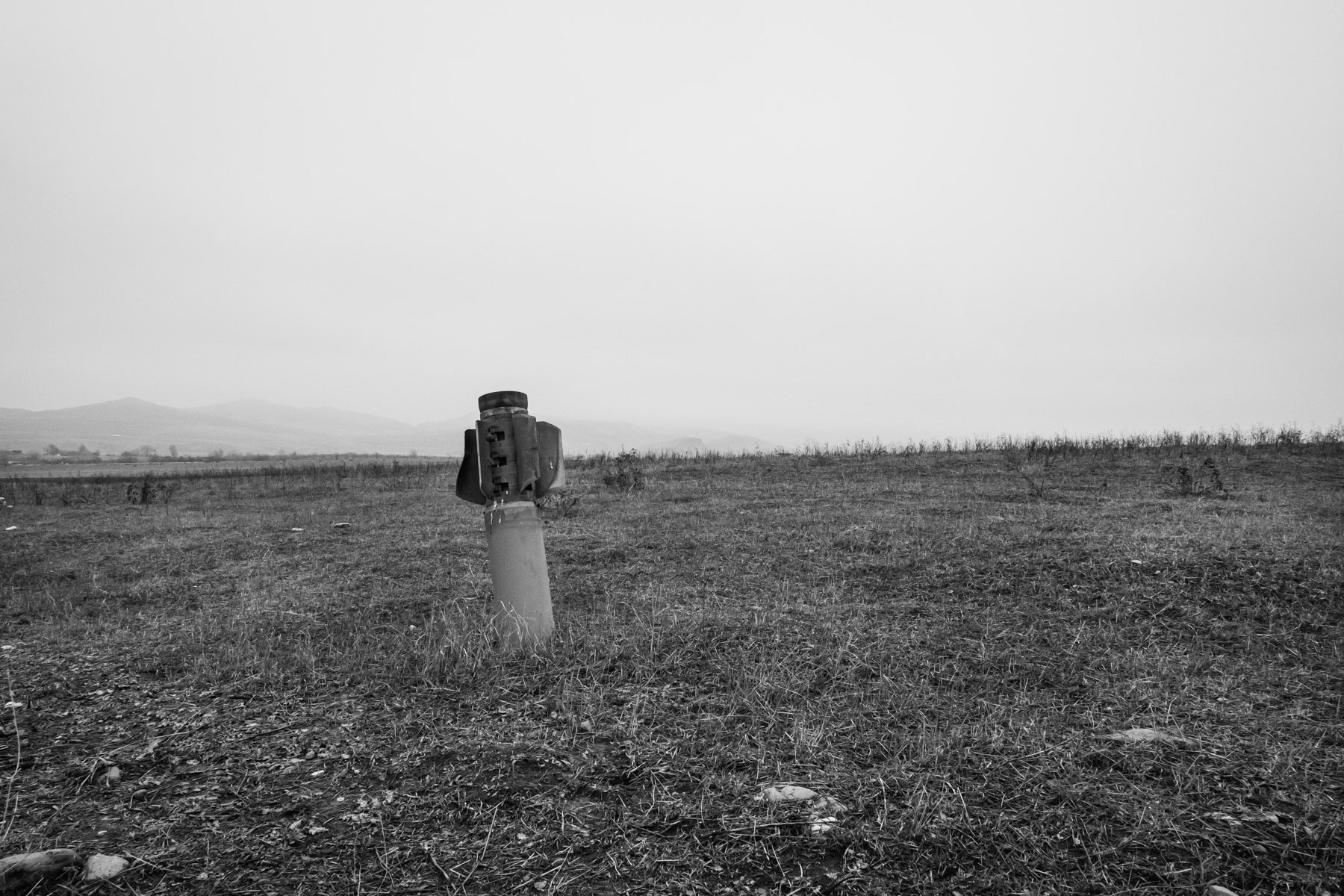
A rocket from a Russian built "Smerch" multiple rocket launcher able to fire 12 rounds in less than 40 seconds over a distance of 70 to 90km. Battle fields between Khramort and Aghdam. Nagorno-Karabakh, December 2020

A shelled house. Starting on the 27th of September 2020, the Azerbaijani artillery and drones kept Stepanakert, the capital of Nagorno-Karabakh, a town with a population of 50,000, under fire for 44 days. Human Rights reports highlighted the use by both sides of banned munitions such as cluster munitions and artillery rockets that did not distinguish between military targets and civilian structures. Armenian forces have also hit several times densely populated areas with rockets within Azerbaijan, in particular the second largest city of the country, Ganja. Stepanakert, Nagorno-Karabakh, December 2020

Remains of an Armenian tank taken out by an attack drone. Northern frontline, Maghavuz in Martakert region, Nagorno-Karabakh, December 2020

Armenian servicemen receiving their briefing before being dispatched for their guard duty shift along the new frontlines nearby. Chartar town, Nagorno-Karabakh, December 2020

Newspaper and announcement wall. Martuni town, Nagorno-Karabakh, December 2020

Working without electricity. Stepanakert, Nagorno-Karabakh, December 2020

Residents of Chartar, two months after the ceasefire live starts to return to a new normal and people displaced during the conflict return little be little. Chartar, Nagorno-Karabakh, January 2021

Before the war Kamir Shuka town was located in the center of Nagorno-Karabakh. It is now a border town on the frontline due to a radical change of the geopolitical map and the defeat to Armenian troops during the last conflict. Along the main road leading from the south towards Shushi and the capital Stepanakert, Kamir Shuka is of the utmost strategic importance and was subject of heavy fighting and shelling until the cease-fire. Mostly men remain in town, police patrol the town, Russian forces establish field bases, most houses are badly damaged and locked and most of the population is displaced in Stepanakert or Yerevan. Kamir Shuka, Nagorno-Karabakh, December 2020

Shosh village along the road linking Stepanakert and Kamir Shuka. Nagorno-Karabakh, January 2021

Shelled houses. Starting on the 27th of September 2020, the Azerbaijani artillery and drones kept Stepanakert, the capital of Nagorno-Karabakh, a town with a population of 50,000, under fire for 44 days. Human Rights reports highlighted the use by both sides of banned munitions such as cluster munitions and artillery rockets that did not distinguish between military targets and civilian structures. Armenian forces have also hit several times densely populated areas with rockets within Azerbaijan, in particular the second largest city of the country, Ganja. Stepanakert, Nagorno-Karabakh, December 2020

Marietta, 67, from Avetaranots village near Shushi. She was displaced from her home and lives in the building of the sports school of Askeran town with her children and grandchildren. "My younger son drove up and said mom, we cannot stay in the village, the Azerbaijani soldiers are about to enter the village. It all happened unexpectedly, we abandoned our homes and fled, we barely had time to take anything. I dont know who provoked this and the previous war, we used to trade with each other in peace in other times" Marietta says. Temporary shelter for displaced, Askeran, Nagorno-Karabakh, December 2020

Starting on the 27th of September 2020, the Azerbaijani artillery and drones kept Stepanakert, the capital of Nagorno-Karabakh, a town with a population of 50,000, under fire for 44 days. Human Rights reports highlighted the use by both sides of banned munitions such as cluster munitions and artillery rockets that did not distinguish between military targets and civilian structures. Armenian forces have also hit several times densely populated areas with rockets within Azerbaijan, in particular the second largest city of the country, Ganja. Stepanakert, Nagorno-Karabakh, December 2020

Gavor has been displaced from Hadrut, he is volunteering supporting displaced families finding accomodation in Stepanakert. It has become almost impossible to find accomodation in Stepanakert and beyond as people from Shushi and Hadrut region are now looking for space in Stepanakert. Also displaced persons that originally fled to Yerevan, the Armenian capital, are now also returning to Nagorno-Karabakh. Stepanakert, Karabakh, December 2020

Armenian military positions near Shushi. A new reality for the Armenian population since most of southern Karabakh and the town of Shushi were captured by Azerbaijan during the 44-day war. Along the Karmir Shuka - Shushi road. Nagorno-Karabakh, January 2021
![The town of Shushi was captured by the Azerbaijani armed forces on 7-9 November 2020. Russian peacekeeping forces have set up checkpoints at the gates of the city to ensure that Armenian passengers and cars can pass as the only road between Stepanakert and Armenia passes through Shushi. There are [Russian] plans to build a bye pass road to avoid Shushi in the future. Shushi, Nagorno-Karabakh, December 2020](https://cdn.myportfolio.com/d0cf7ff7-c736-490f-849b-30600b04c61f/8156fc46-9de6-4fd9-ae54-e32f6f149fbb_rw_1920.jpg?h=9cbf53a21f7b1177a6042249914cb2b1)
The town of Shushi was captured by the Azerbaijani armed forces on 7-9 November 2020. Russian peacekeeping forces have set up checkpoints at the gates of the city to ensure that Armenian passengers and cars can pass as the only road between Stepanakert and Armenia passes through Shushi. There are [Russian] plans to build a bye pass road to avoid Shushi in the future. Shushi, Nagorno-Karabakh, December 2020

The last Russian checkpoint when exiting the Lachin corridor towards Goris in Armenia. This checkpoint is already several km within Armenia proper and is becoming a state border under full management of the Russian forces who decide who can enter and exit. Between Tegh and Karashen in Armenia, December 2020

Roman, 84, did not want to abandon his native village of Khramort and stayed throughout the 44 day war. All civilians were evacuated from the area as it was and still is on the frontline. "I wanted to be close to my sons who were fighting on the battlefield" he says. Today Russian doctors visited him and said he has a heart condition and should seek further help at the hospital in Stepanakert. Stepanakert is now more than 90 minutes away due to roads that now pass through Azerbaijani controlled territory. Khramort village near Aghdam, Nagorno-Karabakh, December 2020

School Nr 10 after repeated Azerbaijani artillery hits. Starting on the 27th of September 2020, the Azerbaijani artillery and drones kept Stepanakert, the capital of Nagorno-Karabakh, a town with a population of 50,000, under fire for 44 days. Human Rights reports highlighted the use by both sides of banned munitions such as cluster munitions and artillery rockets that did not distinguish between military targets and civilian structures. Armenian forces have also hit several times densely populated areas with rockets within Azerbaijan and in particular Ganja, the second largest city of the country. Secondary school 10 in Stepanakert, Nagorno-Karabakh, December 2020

Armenian soldiers changing shift at their military positions with Shushi town in the background. A new reality for the Armenian population since most of southern Karabakh and the town of Shushi were captured by Azerbaijan during the 44-day war. Along the Karmir Shuka - Shushi road. Nagorno-Karabakh, January 2021

A woman selling sandwiches for students at the end of the classes. Schools have restarted just a couple of weeks after combat operations stopped. Chartar, Nagorno-Karabakh, December 2020

Sos village in the Martuni region. Most of destroyed building are a remainder of the first Karabakh war in the nineties. Sos, Nagorno-Karabakh, January 2021

Repairing electrical lines damaged or destroyed duing the war. Since the end of the conflict the area has to cope with sporadic power supply, in particular in remote areas. Sos village,Nagorno-Karabakh, January 2021

Stepanakert under the clouds observed from the road passing Shushi town. Shushi is now under Azebaijani control for the past 4 weeks and Russian peace keepers have installed checkpoints along the road to guarantee safe passage for the Armenian population of Stepanakert and other territories still controlled by Armenians. Shushi, Nagorno Karabakh, December 2020
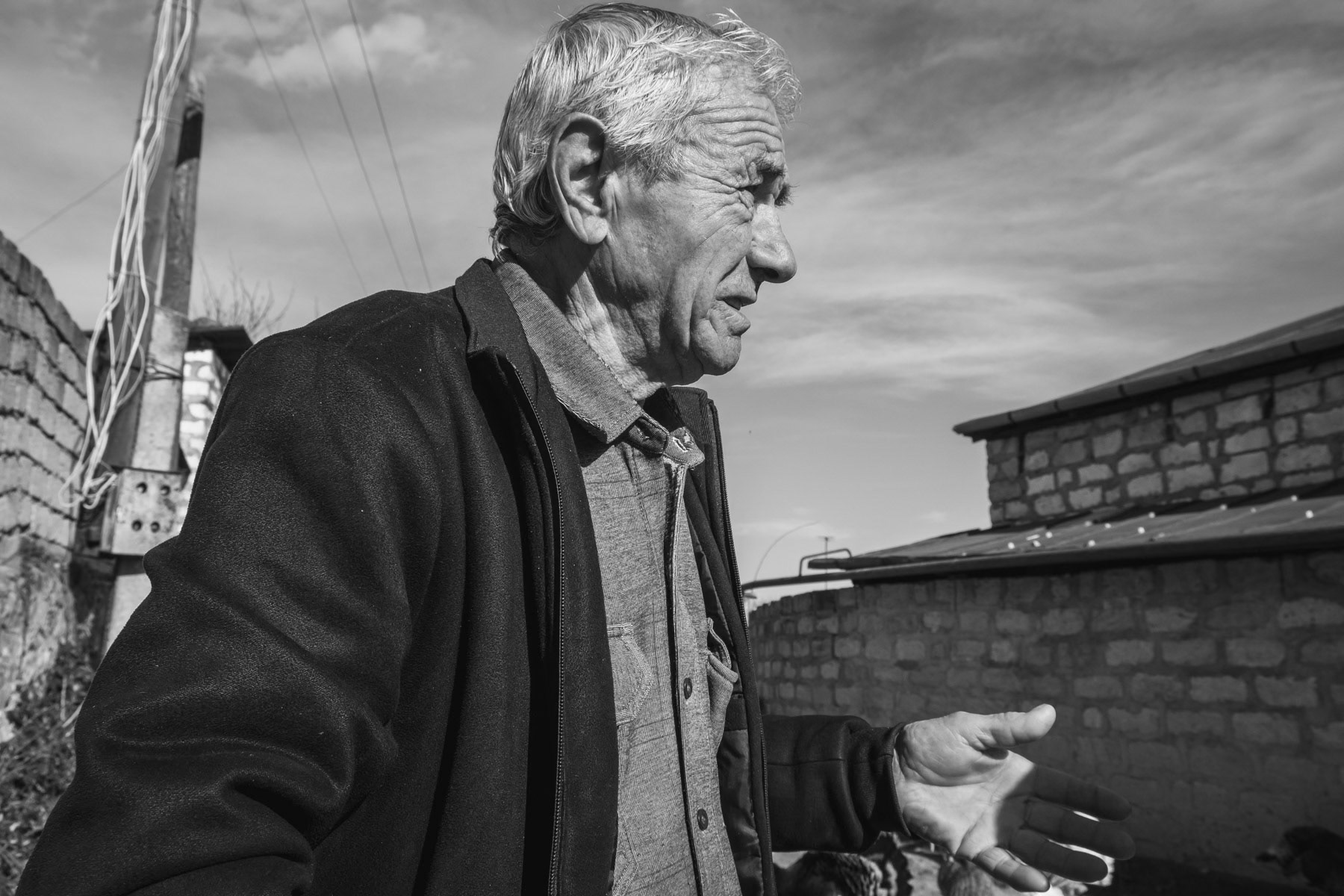
Shahen, 80, was displaced and stayed several weeks in Yerevan during the war, but came back as soon as he could in December. "I felt like in prison in Yerevan and I am happy to be back home although it feels completely different with the new frontline so close" said Shahen from Chartar a town only a couple of kilometres from the frontline. Chartar, Nagorno-Karabakh, January 2021

Residents adding pictures of soldiers killed or gone missing during the past 44-day war that saw more than 6000 people killed on both sides. Republic Square, Stepanakert, Nagorno-Karabakh, January 2021

New graves for the ever increasing number of missing soldiers retrieved from the battlefield. More than 3000 Armenian soldiers have been killed during the 44-day war, a whole generation of 2000-2002 has been massacred. Yarablur war cemetary, the final rest place of soldiers that lost their lives during the Nagorno Karabakh wars in the nineties, 2016 and more recently in 2020. Yerevan, Armenia, December 2020

One of the main alleys in Chartar, a town only a couple of kilometres from the new frontline. Chartar, Nagorno-Karabakh, January 2021

Lachin corridor linking Stepanakert and Goris in Armenia. The corridor is under Russian peace keeping forces's control altough passing through Azerbaijan after territories surrounding Karabakh were handed over by Armenia to Azerbaijan in accordance with the ceasefire agreement signed on 10 November 2020 between Russia, Azerbaijan and Armenia. Nagorno-Karabakh, December 2020

Children during basic military drill and excercise at school. Nngi village, Nagorno-Karabakh, January 2021

A Russian checkpoint along the Lachin corridor linking Stepanakert and Goris in Armenia. The corridor is under Russian peace keeping forces's control altough passing through Azerbaijan after territories surrounding Karabakh were handed over by Armenia to Azerbaijan in accordance with the ceasefire agreement signed on 10 November 2020 between Russia, Azerbaijan and Armenia. Nagorno-Karabakh, December 2020
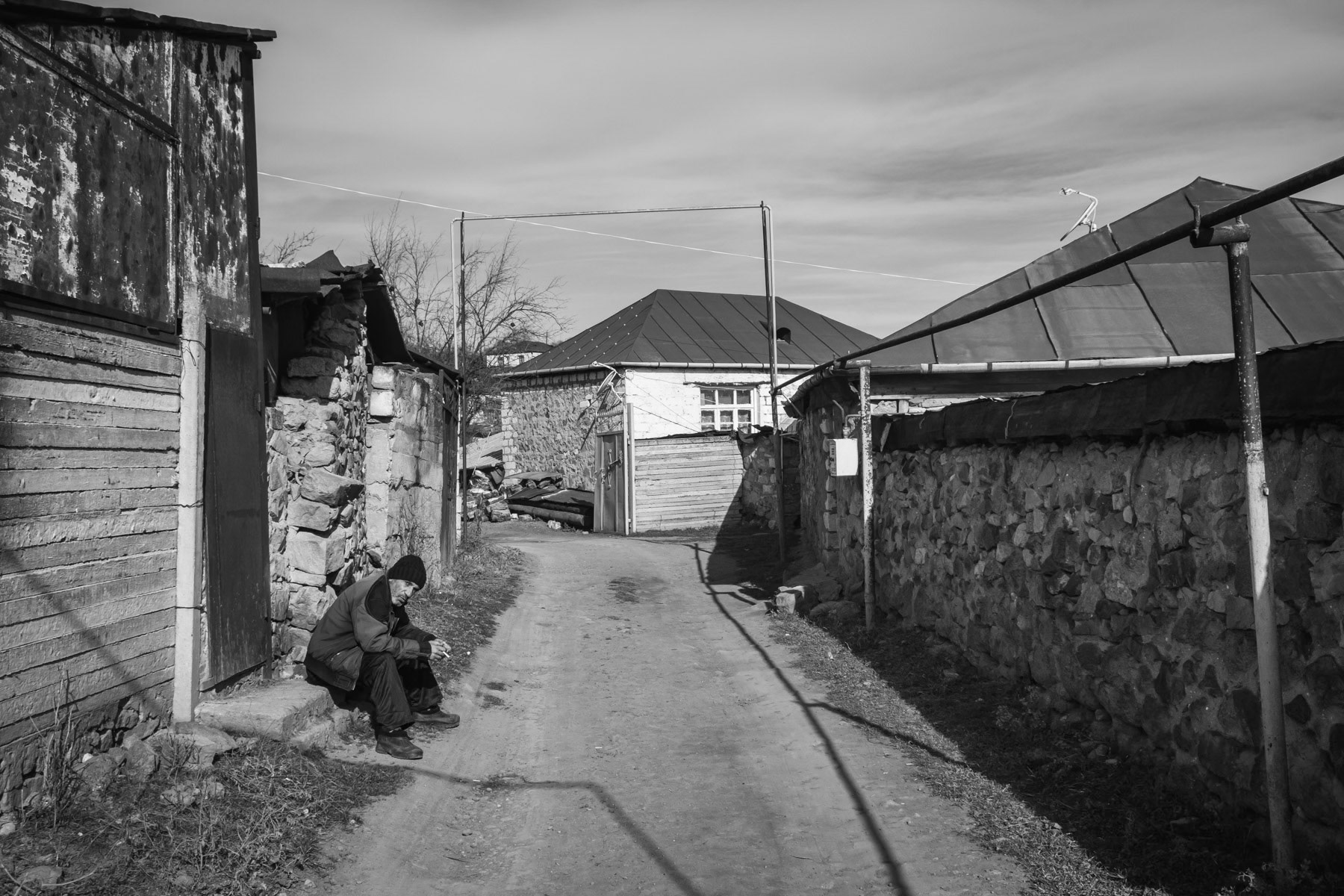
Chartar a town only a couple of kilometres from the frontline. Nagorno-Karabakh, January 2021

Vineyards between Sos and Karmir Shuka. Nagorno-Karabakh, January 2021

Armenian and Azerbaijani military positions near Shushi. A new reality for the Armenian population since most of southern Karabakh and the town of Shushi were captured by Azerbaijan during the 44-day war. Along the Karmir Shuka - Shushi road. Nagorno-Karabakh, January 2021








